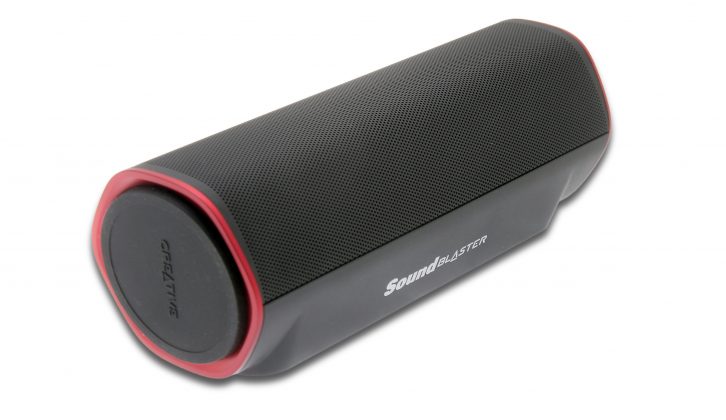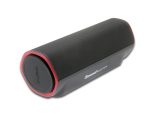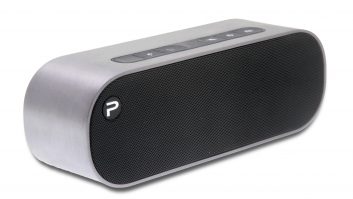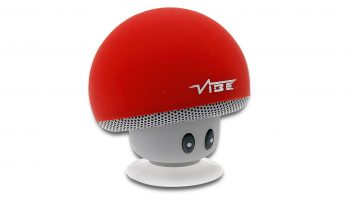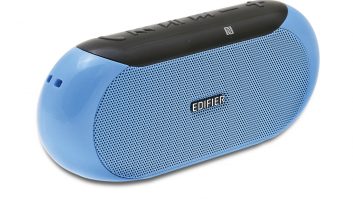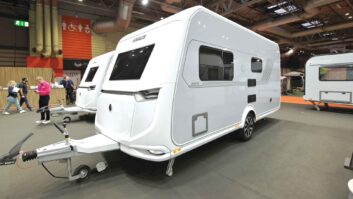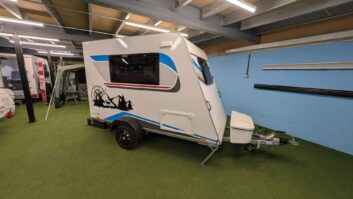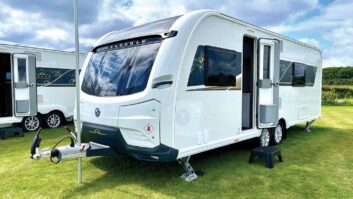Verdict
The Creative Sound Blaster Free offers excellent value for money, being not just a portable Bluetooth Speaker with wireless and USB connections, but a stand-alone sound system, with a built-in MP3-player and a card reader. Now, if they could only improve the sound quality as well, it would be a modern marvel. Until then, we’ve awarded the Creative Sound Blaster Free a three-star rating.
Do shop around, since the manufacturer’s recommended price for the Creative Sound Blaster Free Bluetooth speaker has gone up from £59.99 to £79.99 since our test. We have found it for sale in 20 or more shops at £56.46 to £59 in January 2016.
Pros
Shower proof
Inbuilt MP3 Player and card reader
Cons
Thin sound quality
Price seems to be rising
Almost as soon as Sony launched its Walkman personal stereo in 1979, other brands got in on the act and produced plug-in speakers. A pair of these and the player together were much smaller than a typical ghetto-blaster-style portable stereo. Unfortunately, personal stereos produced good sound – but those mini-speakers didn’t!
Happily, audio technology has moved on massively, and even today’s tiniest speakers pump out acceptable sound. However, the way we store music has advanced, too. Cassette tapes are practically museum pieces, but personal CD, mini-disc and MP3 players aren’t very far behind.
Nowadays, most of us keep our music collections on smartphones, computers or tablets. So, if we wish to shed the headphones, we’ll connect one of those devices to speakers.
Speaking of connections, that is something else that has evolved. The modern version of those old-fashioned Walkman speakers are now called Bluetooth speakers, and the clue is in the title: if you’re supplying music to the speakers from a phone, a tablet or a laptop, the connection will be done using the same wireless Bluetooth technology as a vehicle’s hands-free system. That makes a big difference. Typically, you can put up to 10m between the player and the speakers, so you can sit back and control the music from the smartphone or computer in your hand, even if the speakers are at the other end of the van. And that’s without a cable in sight.
We kicked off our tests by evaluating the sound quality. We factored in outright power plus fullness and clarity across the entire sonic range. Then we moved onto practicalities, such as the speakers’ play duration between charges, whether charging can be done from the mains or only a USB port, forcing you to boot up a computer, and whether the system can be fully controlled from your device. Some, for instance, ignore volume adjustments, meaning you have to walk over to the speaker and physically press its buttons to change the level. Speakers with their own remote have an advantage.
Inputs are another important consideration. We’ve already mentioned that all Bluetooth speakers use Bluetooth signals from a device as their primary source of sound, but it’s a bonus if they also accept analogue signals – such as from an iPod, a computer’s headphone port or even a Walkman or video player. Analogue connections use a conventional auxiliary lead rather than wireless technology.
At the other extreme, compatibility with Near Field Communication (NFC) technology, which is a newly launched alternative to Bluetooth, is prudent if you like to have the latest phones and digital gadgets and want to use your speakers with them.
Some speakers even have a small memory-card slot and a built-in digital player, which potentially turns them into a self-contained sound system. This means you don’t need to power up your tablet or drain your phone’s battery with excessive Bluetooth usage to listen to your favourite tracks. Our final consideration is weather resistance. Believe it or not, many of these speakers are designed to work even when being bombarded by rain. Naturally, few of us are going to sit out in the rain listening to music, but it’s got to be a bonus during barbecues or beach days to know that no harm will come to the speakers if they get drenched before they can be packed away somewhere dry.
We decided to assemble a selection of Bluetooth speakers on the Practical Caravan test bench and see how they compare. First of all, let’s look at the Creative Sound Blaster Free, which is available for £59.99 in many shops but has a recommended retail price of £79.99 on Creative’s own website.
The Creative Sound Blaster Free gives a lot for the money. For instance, as well as accepting Bluetooth or venerable aux cables, this is one of the few speakers here that recognises live audio streaming — via the USB connection — from laptops, computers or tablets. If that’s not enough, there’s even an integral card reader and MP3 player, making this a tiny stand-alone sound system.
Extras aside, Creative gets the basics right. We like the Creative Sound Blaster Free’s 10-hour battery life, and the sound quality is good enough, if a little thin compared to the best. Another bonus is splash-proof construction for safe use outside.
This is one of the few speakers that recognises live audio streaming
Technical Specifications
| Creative Sound Blaster Free | Multifunction portable Bluetooth speaker |
| Plays music wirelessly from | Phone or tablet |
| Plays music via USB from | PC, Mac |
| Bonus | Built-in MP3 player |
| In case of rain | Creative Sound Blaster Free is splash-proof |
| MP3 player memory | 32 GB |
| HD Voice | Bluetooth allows hands-free phone calls |
| Creative Sound Blaster Free USB connection | Turns it into a digital PC speaker |
| Supported operating systems | Mac OS X v10.7.5 and above, Windows® 10, Windows® 8.1, Windows® 8, Windows® 7 |
| Size | 71.1 x 200.8 x 68.5mm (2.78" x 7.9" x 2.7") |
| Max Channel Output | Stereo |
| Connections | Micro USB, Bluetooth 4.0, AUX In: 1 x 3.5mm jack Integrated microSD Media Player |
| Warranty | 2-year limited hardware warranty |
| Phone compatibility | iPhone/iPad® running iOS 5.1.1 or higher for Bluetooth |
| Android phone or tablet with | Android 2.3 or higher for Bluetooth |
| System requirements: Windows OS | Intel® Core™2 Duo or AMD equivalent processor, 2.8 GHz or faster |
| System requirements: | Windows 10 64-bit or 32-bit, Windows 8.1 64-bit or 32-bit, Windows 8 64-bit or 32-bit, Windows 7 64-bit or 32-bit |
| System requirements | 1 GB RAM, 600 MB of free hard disk space |
| System requirements for Mac OS | Intel® Core™2 Duo, 2.8 GHz or faster |
| System requirements for Mac | Mac OS X® 10.7.5 or higher |
| System requirements | 1 GB RAM, 600 MB of free hard disk space |
| IOS device needs | iPhone® / iPad® running iOS 5.1.1 or higher for Bluetooth |
| Android device needs | Phone or tablet running Android 2.3 or higher for Bluetooth |
